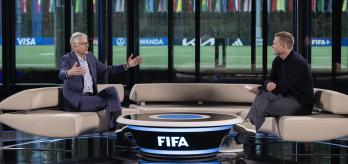Methodology
The intention: What is practised?
The objective of the exercise is to enhance the players’ ability to create and finish within a narrow focus. There are other aspects, such as securing possession and building and progressing, that do not feature in the exercise. The drill focuses on specific player actions, including making aggressive off-the-ball movement that pins defenders to take advantage of the team’s numerical superiority, specifically creating 2v1 and 1v0 scenarios. The attackers are tasked with making off-the-ball runs that give the ball carrier more options, and they must be aware of which is their team-mate’s stronger foot so that they can help them to work some space to finish when the opportunity arises. In addition, players are asked to decide between whether making an overlapping run or a run in front of the defender is the most effective way of putting them in a vulnerable position.
The scale: For whom is this relevant?
This attack v. defence exercise focuses on the player scale, with an emphasis on exploiting overloads to create goalscoring chances. The drill is particularly relevant to players who operate in the forward line in scenarios in which they find themselves with overloads in the final third and space to run into. The start of the sequence simulates a situation in which an attacking unit picks up the ball between defensive lines and drives at a vulnerable backline using fluid movements to overcome the press. Each attacker acts as a member of a typical three-player forward line in which interchanging runs and combinations at pace are important elements. The two defenders operate in a high line or mid-block and are faced with situations in which they must decide whether to press or drop.
The practice type: How is the practice designed?
The exercise involves a finishing element, featuring variable repetitions that provide an abundance of opportunities for players to practise creating and finishing. The drill includes a directional element, with the attacking team attacking one goal and the defending team focusing purely on defending. The narrow nature of the exercise area and the distance between the starting point and the goal are designed to produce a number of outcomes for the players to work on, whilst the numerical advantage helps to increase the number of goalscoring chances. The offside rule applies, which encourages the defenders to step up and forces the attackers to time their runs. The exercise is non-position-specific, with attackers able to interchange positions across the front three. However, when players find themselves in attacking roles, they are asked to act as attackers.
Session plan
Organisation
-
Set up the playing area and a full-size goal like in the graphic above
-
Place a goalkeeper in the goal and position 1 orange player at each red cone, and 1 blue player at each yellow cone.
Explanation
-
The exercise starts with the central blue player in possession. They pass the ball to a team-mate positioned at a yellow cone.
-
Once they have played the pass, the central blue player runs in front of or behind the defender who closes down the recipient of their pass.
-
The blues look to create 2v1 and 1v0 scenarios and try to score.
-
The objective for the oranges is to defend the goal.
-
The offside rule applies.
-
After repeating the sequence 3 times, 1 blue player swaps roles with the team-mate waiting on the outside of the exercise area.
-
After repeating the sequence twice, 1 orange player swaps roles with the team-mate waiting on the outside of the exercise area.
Key coaching points
Roles of coaches
-
First coach: leads the session and emphasises the importance of the players’ off-the-ball movement.
- Second coach: observes the action and offers support and encouragement.























